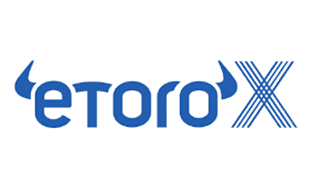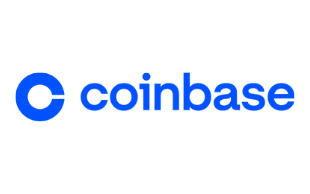DASH has become popular in the last 2 years as a payment method of goods and services. In an age where everyone is able to purchase anything on the internet with crypto like DASH, banks that accept DASH will have an edge over their competitors. But there is a catch - cryptocurrencies like DASH must be regulated by official goverment regulators. Financial regulators can penalize a bank if they aren't sticking to strict regulatory rules regarding volatile financial instruments like DASH. DASH government regulation is increasingly becoming stricter. And as the demand for DASH continues to rise, banks will adapt and become to accept DASH and other crypto assets in various forms.
Although local banks have been slow to embrace DASH, many of them are gradually integrating DASH into their services. They are also partnering with DASH wallets and exchanges to give their customers access to DASH. It is important to note that while many banks do not view DASH negatively, the majority of established financial institutions are looking forward to incorporating crypto technologies and assets like DASH into their online banking services. For those investors who are not familiar with DASH and are still in the research stage, it is worth checking out banks that accept DASH. Remember, a few banks have banned or limited DASH purchases, but more are making the transition and evaluating DASH be part of traditional banking operations, as time goes on.

🤴 Used By: 23,200,000
⚡ Crypto Available: BTC, ETH, BCH, XRP, DASH, LTC, ETC, ADA, MIOTA, XLM and 27 more cryptocurrency.
📈 Traded Volume: 41,693,321
💵 Deposit Methods: Credit cards, VISA, MasterCard, Diners Club, Maestro, Debit Cards, Bank Transfer, PayPal, Neteller, Skrill, WebMoney, China UnionPay, Giropay, Electronic wallets (eWallets), Ethereum, Bitcoin, Bitcoin Cash, Dash, EOS, Ripple XRP, Litecoin, Zcash, Payoneer,
💰 Trading Fees: Fees vary. Overnight and weekend fees apply
💰 Withdrawal Fees: US$5 (minimum withdrawal of US$50)
💰 Deposit Fees: Fees vary (conversion fees for non-USD deposits)
Trading cryptocurrencies can be high risk. Losses may exceed deposits when trading CFDs.

🤴 Used By: 13,000,000
⚡ Crypto Available: BTC, ETH, BCH, XRP, DASH, LTC, ETC, ADA, MIOTA, XLM and 27 more cryptocurrency.
📈 Traded Volume: 42,043,394
💵 Deposit Methods: Credit cards, VISA, MasterCard, Diners Club, Maestro, Debit Cards, Bank Transfer, PayPal, Neteller, Skrill, WebMoney, China UnionPay, Giropay, Electronic wallets (eWallets), Ethereum, Bitcoin, Bitcoin Cash, Dash, EOS, Ripple XRP, Litecoin, Zcash, Payoneer,
💰 Trading Fees: Fees vary
💰 Withdrawal Fees: Fees vary
💰 Deposit Fees: Fees vary
Trading cryptocurrencies can be high risk. Losses may exceed deposits when trading CFDs.

🤴 Used By: 4,000,000
⚡ Crypto Available: BTC, ETH, ETC, XTZ, CLV, EOS, OMG, BNB, LTC, UNI and 820 more cryptocurrency.
📈 Traded Volume: 5,945,756,067
💵 Deposit Methods: Cryptocurrency
💰 Trading Fees: Maker: 0.20%
💰 Withdrawal Fees: Fees vary
💰 Deposit Fees: None
Trading cryptocurrencies can be high risk. Losses may exceed deposits when trading CFDs.

🤴 Used By: 1,000,000
⚡ Crypto Available: BTC and 1 more cryptocurrency.
📈 Traded Volume: 612,000,000
💵 Deposit Methods: Bank transfer (ACH)
💰 Trading Fees: None
💰 Withdrawal Fees: Fees vary
💰 Deposit Fees: Fees vary
Trading cryptocurrencies can be high risk. Losses may exceed deposits when trading CFDs.

🤴 Used By: 8,000,000
⚡ Crypto Available: BTC, ETH, XRP, BCH, EOS, LTC, ADA, XLM, TRX, NEO and 434 more cryptocurrency.
📈 Traded Volume: 110,957,137
💵 Deposit Methods: Cryptocurrency
💰 Trading Fees: 0.10%
💰 Withdrawal Fees: Fees vary
💰 Deposit Fees: None
Trading cryptocurrencies can be high risk. Losses may exceed deposits when trading CFDs.

🤴 Used By: 10,000,000
⚡ Crypto Available: BTC, BCH, ETH, XRP, LTC, BTG, DASH, ETC, EOS, QTUM and 320 more cryptocurrency.
📈 Traded Volume: 924,266
💵 Deposit Methods: Cryptocurrency
💰 Trading Fees: Maker: 0.2%
💰 Withdrawal Fees: None
💰 Deposit Fees: None
Trading cryptocurrencies can be high risk. Losses may exceed deposits when trading CFDs.

🤴 Used By: 73,000,000
⚡ Crypto Available: ATOM, BAT, BTC, BCH, XRP, DAI, DASH, EOS, ETH, ETC and 73 more cryptocurrency.
📈 Traded Volume: 7,622,846,254
💵 Deposit Methods: Bank transfer (ACH)
💰 Trading Fees: Fees vary
💰 Withdrawal Fees: Instant Card Withdrawal: Up to 2% of the transaction plus a minimum of 0.45
💰 Deposit Fees: Credit/debit card: 3.99%
Trading cryptocurrencies can be high risk. Losses may exceed deposits when trading CFDs.

🤴 Used By: 450,000
⚡ Crypto Available: BTC, ETH, XRP, EOS, LTC, XLM, USDT, OMG, ZRX, MKR and 42 more cryptocurrency.
📈 Traded Volume: 64,141,140
💵 Deposit Methods: Bank transfer
💰 Trading Fees: Maker: 0.05-0.15%
💰 Withdrawal Fees: Fees vary
💰 Deposit Fees: No Fees
Trading cryptocurrencies can be high risk. Losses may exceed deposits when trading CFDs.

🤴 Used By: 10,000,000
⚡ Crypto Available: BTC, ETH, USDT, XRP, ATOM, XTZ, XLM, LINK, CRO, BCH and 153 more cryptocurrency.
📈 Traded Volume: 2,630,000,000
💵 Deposit Methods: Credit card
💰 Trading Fees: Maker: 0.04-0.20%
💰 Withdrawal Fees: Cryptocurrency: Fees vary
💰 Deposit Fees: None
Trading cryptocurrencies can be high risk. Losses may exceed deposits when trading CFDs.

🤴 Used By: 2,300,000
⚡ Crypto Available: BTC, ETH, ETC, BCH, LTC, ADA, QTUM, XRP, XTZ, EOS and 10 more cryptocurrency.
📈 Traded Volume: 86,072,667,390
💵 Deposit Methods: Bank transfer (ACH)
💰 Trading Fees: 2.9-3.9% (depending on loyalty level)
💰 Withdrawal Fees: Fees vary
💰 Deposit Fees: Credit card: 5%
Trading cryptocurrencies can be high risk. Losses may exceed deposits when trading CFDs.

DASH banks would provide business and personal customers with a variety of traditional bank account services but also support DASH deposits and withdrawals in some fashion. A typical DASH bank would offer multi currency wallets that support DASH, acquiring services for buying DASH, and the ability to transfer funds domestically and internationally to you bank account. Often the transfer speed is faster with online banks that support DASH wallets, than that of traditional banks. Finally, a DASH bank would provide all of these services in one platform, with DASH exchange facilities and full bank account management services.
A DASH bank should prioritize decentralization and offer multiple traditional banking services. While most banks do not natively support DASH, many banks are able to link to and interacte with DASH exchanges and digital wallets. All you need to do is register with a DASH bank and link to your DASH wallet. You will be given a private key and a digital wallet address, which are used for DASH digital currency transactions. A DASH bank is like a traditional bank, except it works in the crypto digital DASH economy. The advantage of this type of DASH crypto digital banking is that it offers similar services as conventional banks, such as DASH debit cards, and DASH prepaid cards.
DASH banks are virtual entities often online only, that operate without traditional bank reserves or business hours. DASH users can borrow or lend DASH to anyone, anywhere, at any time, without having to wait until Monday to receive DASH or fiat funds. In addition, because there are no reserves to cover loan defaults, DASH banks can offer higher interest rates and lower protection in case of high-stake loan failure. DASH banks also tend to have low costs of operations and are growing rapidly, but DASH banks are still relatively small when compared to the market share of traditional banking institutions.
In addition to having a bank account, you should look into decentralized finance apps that support DASH. DASH is decentralized and controlled by private keys. Some DASH banks and wallets even act as custodial accounts. Despite the lack of DASH crypto regulation, this innovative DASH crypto technology is revolutionizing the financial industry. DASH assets are notoriously volatile and the value of these assets can fluctuate dramatically, which DASH holders must be aware of.
To start, you will need to register an account on a DASH exchange. You will also need to verify your identity, which can be done by uploading a government-issued ID. You can also set up a bank transfer and link your DASH wallet. These methods are both safe and convenient as long as you pick a financially regulated DASH crypto exchange. After you have registered, you can start making deposits and earning interest on your DASH assets. Most DASH banks offer a choice of different types of crypto assets like DASH, but if you are interested in earning the highest interest, you should opt for a stablecoin with high liquidity and high trading volume on your DASH crypto exchange.
The first step to implementing DASH banking is to determine how to safely hold your DASH crypto assets. While there are risks involved, DASH technology is increasingly gaining popularity and may eventually be one of the most transparent financial systems when compared to some other financial assets. In the meantime, it is essential to make sure your DASH assets are safe in a cold wallet. As the DASH banking industry grows, traditional banks will need to react to support DASH transactions.
These accounts work like a traditional savings account, except you deposit DASH as the currency. The money you deposit earns compound interest, and you can withdraw DASH funds whenever you want. A DASH savings account will earn you interest by lending its DASH to other users. Many DASH savings accounts will have variable withdrawal fees and high minimum balances. However, they are worth considering if you want to earn a higher yield on your DASH investment. The risk factor is the volatility of DASH assets. While some DASH assets earn high yields, the risk of losing them can be too high.
First, you have to purchase DASH. You can buy DASH, or ether using your DASH wallet. One of the biggest drawbacks to using DASH as a means of investment is its volatility. Many banks rely on the stability of fiat currency to ensure its value. They cannot lend or borrow money using DASH, and they cannot earn interest off of it. While many DASH exchanges charge high fees, some of them are free. If you are a DASH beginner, a service like eToro Cryptocurrency is an excellent option and supports a wide range of cryptocurrency including DASH. You may need to pay a small fee to withdraw your DASH funds. However, you must remember to follow all of the DASH exchange's policies. Strict financial regulations apply to all of these DASH services. When choosing a platform for DASH investment, make sure you choose one that meets your needs.
If you are interested in transferring your DASH to a bank account, you will need to know that most banks do not accept DASH as a deposit. You should also remember that banks might ask you to explain why you are using DASH. They might freeze your funds for a certain amount of time if you do not give a satisfactory answer to their questions relating to DASH. That is why it is important to find a bank that accepts DASH and is friendly to it. As the demand for DASH continues to grow, banks are looking for ways to cater to the growing DASH user base. They have recognized that DASH is a lucrative way to transfer funds, and they want to take advantage of the growing DASH transaction volume.
One reason why most banks do not accept DASH is because of its volatility. They are used to charging fees for regular financial products, but if DASH becomes widespread, those fees could be at risk. Banks have strict regulations regarding electronic money handling and cryptocurrency like DASH are in a grey area, this will only increase in the coming years.
If your bank supports DASH, in order to withdraw your DASH to your bank account, you first have to link your bank account with your DASH wallet. Once you have done this, you can click on the 'transfer' option under the 'balance' tab of your DASH wallet. In the 'transfer' tab, you will find a 'deposit' and 'withdraw' option. The latter option will be labeled 'Fiat'. You will have to choose a fiat currency and enter the desired amount of cash to be transferred. Please not fiat currency and DASH conversion fees will apply so check you are happy with the transaction. After you have confirmed the DASH withdrawal, you will get a confirmation message detailing your DASH transaction progress. You will be able to see all the DASH fees and charges that will be involved in the DASH transaction.
Once you have verified that the DASH address you are entering is correct, click 'Submit'. Alternatively, you can copy and paste the address from your DASH wallet into a browser window. If you are using an iOS or Android device, you will need to grant your camera permissions to see the DASH QR code. Afterward, you will need to double-check the DASH address for withdrawing.
Once you hae finished your DASH investment, you can cash out to your bank account by using a DASH exchange as an intermediary. Once you have sent your DASH funds, your DASH exchange will convert them to your local currency and transfer them directly to your bank account. Just make sure to enter the correct bank account information when sending your DASH to your bank account.
If you already own DASH, you may wonder how to link your bank account to your DASH wallet. Well, the answer depends on the DASH exchange you are using. DASH exchange lets you link your bank account to your DASH wallet. This lets you use your bank account's funds to buy more DASH. Once you have a bank account, it is easy to link your DASH wallet to your bank account and transfer money to it.
If you already own DASH, you can easily deposit and buy them on DASH exchange. To link your bank account to your DASH wallet, go to the DASH exchange website and follow the steps. You can even link your bank account to the eToro Cryptocurrency service for faster transactions and higher limits. Alternatively, you can use your bank account to send fiat from your bank account to eToro Cryptocurrency USD wallet. Once you have done so, you are ready to start trading.
You can withdraw as much DASH as you have in positive balance, but you must stay within the law and pay any taxes due. DASH exchanges have different fees, depending on their network. In most countries DASH is considered a currency, so tax payers are required to pay taxes on the profits made on DASH. In any case, it is best to consult a tax professional before you sell large sums of DASH to earn cash. As DASH exchanges are relatively new and unregulated, there are a number of scams attempting to convert your DASH into cash.
Once you have verified that your bank account is linked to your DASH exchange, you can start withdrawing. Once you have linked your bank account, click the Transfer option. This option will be located under your DASH account balance. A drop-down list will give you deposit and DASH withdrawal options. You will notice that there is a Fiat option and a bank account option. Select the latter. Select the desired amount and choose a payment method to release your DASH.
You may be wondering how to sell DASH for cash. You may already own a small amount of DASH digital currency and would like to get cash for it. There are several options for this. In order to sell DASH, you will need to have your public DASH address, private key and DASH seed phrase (usually a long string of randomized words) at hand. In addition, you may be able to use an exchange to sell your DASH.
Another option is to sell DASH on a third-party broker. This method is similar to how you might exchange currencies in a foreign airport. The third-party broker will accept DASH and then let you withdraw the amount in the currency of your choice. You will then receive the money in your bank account, after DASH conversion fees. However, keep in mind that there are DASH money-laundering laws that prevent brokers from transferring money to unverified DASH accounts.
Before you sell DASH for cash, make sure you are aware of the transaction fees associated with your DASH sale. You might get a little bit more than you originally paid for your DASH. This is an important step in the DASH selling process, so be sure to carefully calculate your costs and factor them into your DASH profits.
A few things to keep in mind when choosing a DASH bank. First, make sure to choose one with a high level of regulation in your country. For example, you should avoid using a DASH supporting entity that is not regulated by the the FCA, ASIC or CySec. Banks that are regulated by the SEC and FCA are the best options for DASH investors. Also, consider whether the bank offers any security for your DASH digital assets.
A DASH bank should maintain a large number of client DASH digital tokens in cold storage, and should also implement complex encryption technology and and offer regulatory insurance on your DASH amounts. Aside from these security measures, the best DASH banks should also offer a wide variety of security tools. For example, two-factor authentication involves the use of a secondary device, such as an SMS code or confirmation email with your DASH support banks. Some banks even offer local bank accounts that support crypto like DASH in your local region.
Choosing the best DASH bank will depend on many factors. While choosing a DASH bank, make sure it offers the highest security standards. A DASH friendly bank should have a high level of security and use multi-signature technology to protect the security of your DASH funds. A trustworthy bank should also have a proven track record in the DASH ecosystem, which means it will not have any major DASH hacking incidents.
Before you make a decision, consider how reliable each DASH bank is. This is an important factor because it ensures that your DASH money is safe from hackers. Check for licensing and registration to make sure that the bank you are considering to transact DASH with is legitimate. Likewise, avoid banks with anonymous founders and questionable jurisdictions because these could lead to DASH exit scams.
The banking system is still adjusting to the new DASH industry. It seeks to strike a balance between profits and risks, and is therefore not in a rush to join the DASH industry. It is still early days for banks to join the industry, as they need more solid ground and foreseeable guarantees to ensure the safety of DASH transactions and investments. While cooperation between banks and DASH owners is still in the beginning stages, the development of DASH blockchain technology is accelerating rapidly and leading banks are integrating DASH blockchain tech into their activities.
Choosing the right DASH exchange is a challenging process. The following article provides a list of DASH exchanges for investors and DASH traders. Some of the factors you should consider when choosing a DASH exchange include security measures, ease of use, and the number of cryptocoins like DASH available for trading. In addition to security measures, DASH traders should also check whether the exchanges are permitted to operate in their jurisdiction by financial regulators.
While there are plenty of bank accounts for people who want to deposit DASH into their account, not all of them will accept it. For instance, some banks do not accept credit card purchases of DASH, and customers have reported difficulties withdrawing their funds from some DASH exchanges using these cards. Some banks prohibit employees from investing in DASH, which has been criticized as an attempt at control. Until these regulations are changed, there is no way to know how many banks will accept DASH as a deposit method.
The reason for the lack of acceptance is the inherent volatility of DASH. Banks want to make money, not lose it. Obviously, DASH is more stable than other cryptocurrency, but the risk of losing money with DASH is too high to consider for most established financial institutions. Regardless, it is not a bad idea to keep up with the latest in DASH news. So, while some banks will accept DASH, others are unlikely to do so.
DASH has recently become a popular form of payment, investment opportunity, and investment vehicle, but not all banks recognize DASH as a valid form of currency. Despite the many risks and complexities involved with DASH, the banking industry is working to catch up and embrace DASH. In addition to lobbying regulators to make DASH more acceptable, some banks are already offering their own digital currencies as an alternative to DASH to high-net-worth clients. Other banks are considering opening DASH trading desks and offering DASH investments to wealthy clients.
While DASH can be a potential rival, financial institutions need to stop thinking of DASH as a competitor and start looking at it as an opportunity. By adding DASH and blockchain technology to their products, banks can add a valuable layer of security and assurance to the unregulated DASH industry. By adopting DASH, banks can take banking to the next level of efficiency and innovation.
DASH blockchain technology can help solve some of these problems, but it is not a panacea for the risks associated with DASH. Banks should develop a risk management solution that will help them manage the risks that come with the DASH crypto industry. Investing in this technology could also help them prepare for DASH regulatory changes. For now, banks should develop a robust program that incorporates safeguards into all of their DASH offerings.
As DASH gains more legitimacy, more banks are embracing them. DASH is a popular alternative to traditional currencies, and many people are turning to it as a secure way to store their money. However, the DASH market is volatile, and it can be difficult to predict when DASH will increase or decrease in value. Even companies that offer high interest rates for DASH cannot protect you from sudden price fluctuations. The exchange rate is the biggest factor in determining how much DASH is worth. With this in mind, banks should consider allowing customers to use DASH as an alternative to their traditional debit and credit cards.
Blockchain technology and the sophistication of DASH continues to evolve. Blockchain technology and DASH exchanges are a great convenience for consumers, but they come with a number of risks. Regulatory oversight of the DASH market is crucial, as the use of DASH poses a high risk for banks. Because banks are in the business of making money, even small fluctuations and bad press with DASH can cost them a lot of money.
Many countries around the world have either limited or banned DASH. This ban applies to all DASH, regardless of their value. The ban is the result of DASH government regulations, which often restrict the use of the DASH currency. The bans have had a negative impact on the value of DASH. Despite the bans, many DASH exchanges remain popular. In fact, a recent study found that a high percent of all DASH users use DASH as their primary method of payment for certain transaction types like gaming and buying services online with their DASH.
While this ban is a step in the right direction, it does not make the DASH market unregulated. Banks that have a general policy against DASH may still be a great way to promote financial inclusion. Despite the DASH risks, however, financial institutions should be cautious when dealing with unregulated DASH entities. And they must take the time to assess the risks of any DASH transaction. And in the end, they have to determine if cryptos like DASH are right for their customers.
In order to be successful in the DASH game, you must open a verified bank account. At some point you will want to turn your DASH into real fiat money that you can use. To open an account that supports DASH, you should be aware of the compliance procedures and documents you need to present to your DASH supporting bank. You should also be realistic about the risks associated with the DASH industry. Traditional banks are unlikely to open an account that directly supports DASH, for you due to the higher risks involved. So you may have to use a intermediary DASH crypto exchange or DASH trading platform and then transfer your balance to your bank.
Make sure the bank accepts your DASH sourced income. Many banks are worried about international regulators and they are denying accounts to legitimate DASH clients. Some banks may ask for DASH due diligence and make people go through a rigorous process. Despite this, there are still many ways to open a bank account for DASH sourced income. Many people lie about their DASH income source or open accounts in someone else's name, this is not a good idea. You risk losing all of your DASH if you falsify any KYC information you give.
crypto exchanges are not the only way to purchase DASH, some banks may also offer certain crypto assets like DASH. Most exchanges also allow you to fund your account using a debit or credit card and then convert your DASH to cash, which you can move to your bank. The fees for funding your account vary, but bank transfers are usually cheaper than credit or debit cards. Funding your account does not mean that you have bought any DASH. Before you can withdraw your DASH, you must exchange DASH for the currency of your choice. Most exchanges allow you withdraw DASH to multiple payment options, not just a linked bank account.
Getting a bank account to buy DASH is as simple as opening a general checking bank account. Most DASH friendly banks will accept your KYC documents and valid ID photo ID proof, and will allow you to connect directly to an online portal that you can like to your DASH crypto exchange. But it may take a few days to get your DASH money. And while you are waiting for your DASH money to clear, you're better off using a DASH exchange.
The future of banking and DASH will be impacted by the emergence of challenger banks, app-banks, financial institutions and payment facilitators that all support many cryptocurrencies like DASH. Many challenger banks already offer DASH services based on blockchain technology, while others may start to do so in the future. However, blockchain and DASH are only one solution to the banking industry's problems. A better approach is to examine how the DASH will integrate with each other and new technologies that unfold in the coming years with DASH and crypto.
The future of money and payments is being shaped by DASH creative innovation. The advent of new payment systems and new central bank digital currencies like DASH has opened up new vistas in the world's monetary system. Yet, central banks remain the gatekeepers of economic decisions regarding the future of DASH. For DASH to be considered a stable, interoperable digital currency, central banks must maintain their role as the trusted, regulated intermediary on DASH and other crypto assets as they emerge.
Central banks play a vital role in a nation's economy. They regulate the economic environment, and their mandates vary widely. DASH blockchain is transforming the banking industry and introducing a more secure way to send and receive payments with DASH. By eliminating the need for third-party verification, DASH beats the current bank transfer process over international borders. However, there is a risk that the current banking system may not survive as it is now, as DASH use grows. The world is increasingly interconnected, so the actions of a single central bank towards DASH may affect the entire crypto economy. In this scenario, the impact of one central bank's policymaking could have disastrous consequences the uptake of DASH for other countries. The Great Recession, for example, had a global impact, spreading rapidly through other economies. The same risk exists with DASH and central banks and manufacturing crises. DASH can prevent this risk, since DASH is decentralised. It is also impossible to duplicate or counterfeit DASH.
Unlike traditional banking, DASH banking is a completely decentralized digital system, meaning that any DASH transaction is recorded irrevocably over time-stamped blocks. While this may not have a major effect on traditional banks in the long run, the decentralization of the DASH system might undermine its peers. Furthermore, fiat currency is highly volatile but not as volatile as DASH, so obtaining a mortgage or receiving money in DASH form is risky. Hence, a financial institution must be confident that DASH volatility becomes stable before they can even consider it.
The volatility of DASH makes banks reluctant to deal with it. After all, banks are there to make money and keep their financial networks running. They do not want to lose their customers DASH investments, and destroy their economic systems. The regulation on electronic money handling is already strict. And it is only going to get tighter with DASH in the future. As a result, many countries do not have clear regulation of DASH. This makes it very difficult for banks to carry out transactions using systems that process DASH.
If DASH isn’t quite what you are looking for you can check out some of the best DASH alternatives below.
If you would like to see DASH compared agains some of the best DASH crypto exchange alternatives available right now you can do so by clicking on the links below.